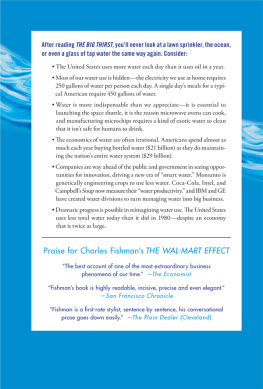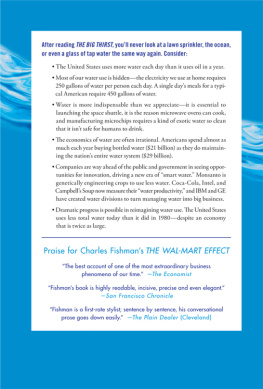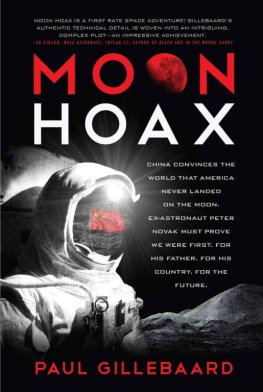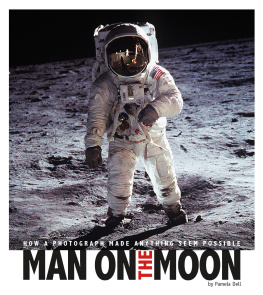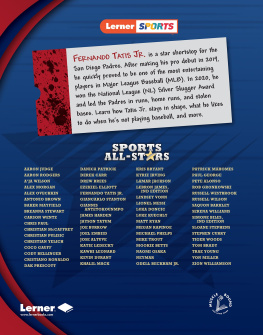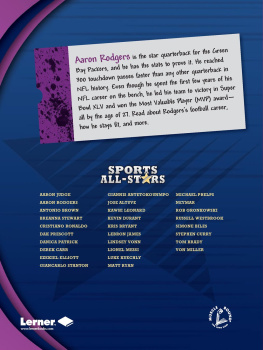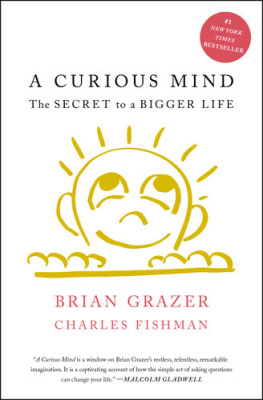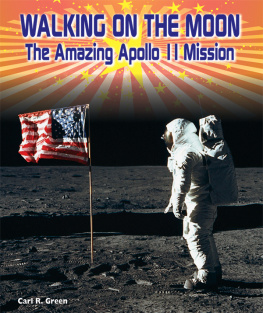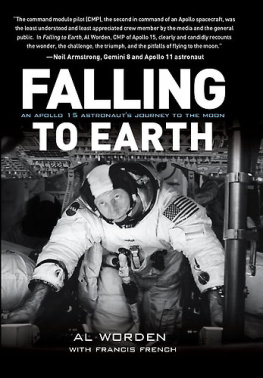Fishman - One Giant Leap: The Impossible Mission That Flew Us to the Moon
Here you can read online Fishman - One Giant Leap: The Impossible Mission That Flew Us to the Moon full text of the book (entire story) in english for free. Download pdf and epub, get meaning, cover and reviews about this ebook. City: New York etc, year: 2019, publisher: Simon & Schuster, genre: Romance novel. Description of the work, (preface) as well as reviews are available. Best literature library LitArk.com created for fans of good reading and offers a wide selection of genres:
Romance novel
Science fiction
Adventure
Detective
Science
History
Home and family
Prose
Art
Politics
Computer
Non-fiction
Religion
Business
Children
Humor
Choose a favorite category and find really read worthwhile books. Enjoy immersion in the world of imagination, feel the emotions of the characters or learn something new for yourself, make an fascinating discovery.
- Book:One Giant Leap: The Impossible Mission That Flew Us to the Moon
- Author:
- Publisher:Simon & Schuster
- Genre:
- Year:2019
- City:New York etc
- Rating:5 / 5
- Favourites:Add to favourites
- Your mark:
- 100
- 1
- 2
- 3
- 4
- 5
One Giant Leap: The Impossible Mission That Flew Us to the Moon: summary, description and annotation
We offer to read an annotation, description, summary or preface (depends on what the author of the book "One Giant Leap: The Impossible Mission That Flew Us to the Moon" wrote himself). If you haven't found the necessary information about the book — write in the comments, we will try to find it.
Fishman: author's other books
Who wrote One Giant Leap: The Impossible Mission That Flew Us to the Moon? Find out the surname, the name of the author of the book and a list of all author's works by series.
One Giant Leap: The Impossible Mission That Flew Us to the Moon — read online for free the complete book (whole text) full work
Below is the text of the book, divided by pages. System saving the place of the last page read, allows you to conveniently read the book "One Giant Leap: The Impossible Mission That Flew Us to the Moon" online for free, without having to search again every time where you left off. Put a bookmark, and you can go to the page where you finished reading at any time.
Font size:
Interval:
Bookmark:
Thank you for downloading this Simon & Schuster ebook.
Get a FREE ebook when you join our mailing list. Plus, get updates on new releases, deals, recommended reads, and more from Simon & Schuster. Click below to sign up and see terms and conditions.
CLICK HERE TO SIGN UP
Already a subscriber? Provide your email again so we can register this ebook and send you more of what you like to read. You will continue to receive exclusive offers in your inbox.

TO NICOLAS
Who always reaches for the Moon, and whose footprints are on these pages, and on my heart
Boy this thing sure flies nice.
Pete Conrad, Apollo 12 commander
at the controls of lunar module Intrepid, preparing to fly to a pinpoint landing on the Moon
T he Moon has a smell.
It has no air, but it has a smell.
Each pair of Apollo astronauts to land on the Moon tramped lots of Moondust back into the lunar moduleit was deep gray, fine-grained and extremely clingyand when they unsnapped their helmets, they immediately noticed the smell.
We were aware of a new scent in the air of the cabin, said Neil Armstrong, the first man to set foot on the Moon, that clearly came from all the lunar material that had accumulated on and in our clothes. To Armstrong, it was the scent of wet ashes. To his Apollo 11 crewmate Buzz Aldrin, it was the smell in the air after a firecracker has gone off.
All the astronauts who walked on the Moon noticed it, and many of them commented on it to Mission Control. Harrison Schmitt, the geologist who flew on Apollo 17, the last lunar landing, said after his second Moon walk, Smells like someones been firing a carbine in here. Almost unaccountably, no one had warned lunar module pilot Jim Irwin about the dust. When he took off his helmet inside the cramped lunar module cabin, he said, Theres a funny smell in here. His Apollo 15 crewmate
Moondust was a mystery that the National Aeronautics and Space Administration had, in fact, thought about. Cornell University astrophysicist Thomas Gold warned NASA that the dust had been isolated from oxygen for so long that it might well be highly chemically reactive. If too much dust was carried inside the lunar modules cabin, the moment the astronauts repressurized it with air and the dust came into contact with oxygen, it might start burning, or even cause an explosion. (Gold, who correctly predicted early on that the Moons surface would be covered with powdery dust, also had warned NASA that the dust might be so deep that the lunar module and the astronauts themselves could sink irretrievably into it.)
Among the thousands of things they were keeping in mind while flying to the Moon, Armstrong and Aldrin had been briefed about the very small possibility that the lunar dust could ignite. It was, said Aldrin, the worry of a few. A late-July fireworks display on the Moon was not something advisable.
Armstrong and Aldrin did their own test. They took a small sample of lunar dirt that Armstrong had scooped into a lunar sample bag and put in a pocket of his spacesuit right as he stepped onto the Moona contingency sample in case, for some reason, the astronauts had to leave suddenly without collecting rocks. Back inside the lunar module the astronauts opened the bag and spread the lunar soil out on top of the ascent engine. As they repressurized the cabin, they watched to see if the dirt started to smolder. If it did, wed stop pressurization, open the hatch and toss it out, explained Aldrin. But nothing happened.
The Moondust turned out to be so clingy and so irritating that on the one night that Armstrong and Aldrin spent in the lunar module on the surface of the Moon, they slept in their helmets and gloves, in part to avoid breathing the dust floating around inside the cabin.
NASA had anticipated the dust, and the danger. The smell was a surprise.
By the time the Moon rocks and dust got back to Eartha total of 842 pounds from six lunar landingsthe smell was gone. Scientists think the rocks and dirt were chemically reactive, as Gold theorized, but that the air and moisture the rocks were exposed to in their sample boxes on the way to Earth pacified them, releasing whatever smell there was to be released.
Scientists who have studied the rocks and dirt and handled them and sniffed them say they have no odor at all. And no one has quite figured out what caused it, or why it was so like spent gunpowder, which is chemically nothing like Moon rock. Very distinctive smell, said Apollo 12 commander Pete Conrad. Ill never forget. And Ive never smelled it again since then.
In 1999, as the century was ending, the Pulitzer Prizewinning historian Arthur Schlesinger Jr. was among a group asked what the most significant human achievement of the 20th century was. In ranking the events, Schlesinger said, I put DNA and penicillin and the computer and the microchip in the first 10 because theyve transformed civilization. But in 500 years, if the United States of America still exists, most of its history will have faded to invisibility. Pearl Harbor will be as remote as the War of the Roses, said Schlesinger. The one thing for which this century will be remembered 500 years from now was: This was the century when we began the exploration of space. He picked the first Moon landing, Apollo 11, as the most significant event of the 20th century.
The leap from one small planet to its even smaller nearby Moon may well look modest when space travel has transformed the solar systema trip no more ambitious than the way we think of a flight from Dallas to New York City today. But it is hard to argue with Schlesingers larger observation: in the chronicle of humanity, the first missions by people from Earth through space to another planetary body are unlikely ever to be lost to history, to memory, or to storytelling.
The leap to the Moon in the 1960s was an astonishing accomplishment. But why? What made it astonishing? Weve lost track not just of the details; weve lost track of the plot itself. What exactly was the hard part?
The answer is simple: when President John Kennedy declared in 1961 that the United States would go to the Moon, he was committing the nation to do something we couldnt do. We didnt have the tools, the equipmentwe didnt have the rockets or the launchpads, the spacesuits or the computers or the zero-gravity foodto go to the Moon. And it isnt just that we didnt have what we would need; we didnt even know what we would need. We didnt have a list; no one in the world had a list. Indeed, our unpreparedness for the task goes a level deeper: we didnt even know how to fly to the Moon. We didnt know what course to fly to get there from here. And, as the small example of lunar dirt shows, we didnt know what we would find when we got there. Physicians worried that people wouldnt be able to think in zero gravity. Mathematicians worried that we wouldnt be able to work out the math to rendezvous two spacecraft in orbitto bring them together in space, docking them in flight both perfectly and safely. And that serious planetary scientist from Cornell worried that the lunar module would land on the Moon and sink up to its landing struts in powdery lunar dirt, trapping the space travelers.
Every one of those challenges was tackled and mastered between May 1961 and July 1969. The astronauts, the nation, flew to the Moon because hundreds of thousands of scientists and engineers, managers and factory workers unraveled a series of puzzles, a series of mysteries, often without knowing whether the puzzle had a good solution.
In retrospect, the results are both bold and bemusing. The Apollo spacecraft ended up with what was, for its time, the smallest, fastest, and most nimble and most reliable computer in a single package anywhere in the world. That computer navigated through space and helped the astronauts operate the ship. But the astronauts also traveled to the Moon with paper star charts so they could use a sextant to take star sightingslike the explorers of the 1700s from the deck of a shipand cross-check their computers navigation. The guts of the computer were stitched together by women using wire instead of thread. In fact, an arresting amount of work across Apollo was done by hand: the heat shield was applied to the spaceship by hand with a fancy caulking gun; the parachutes were sewn by hand, and also folded by hand. The only three staff members in the country who were trained and licensed to fold and pack the Apollo parachutes were considered so indispensable that NASA officials forbade them to ever ride in the same car, to avoid their all being injured in a single accident.
Next pageFont size:
Interval:
Bookmark:
Similar books «One Giant Leap: The Impossible Mission That Flew Us to the Moon»
Look at similar books to One Giant Leap: The Impossible Mission That Flew Us to the Moon. We have selected literature similar in name and meaning in the hope of providing readers with more options to find new, interesting, not yet read works.
Discussion, reviews of the book One Giant Leap: The Impossible Mission That Flew Us to the Moon and just readers' own opinions. Leave your comments, write what you think about the work, its meaning or the main characters. Specify what exactly you liked and what you didn't like, and why you think so.


